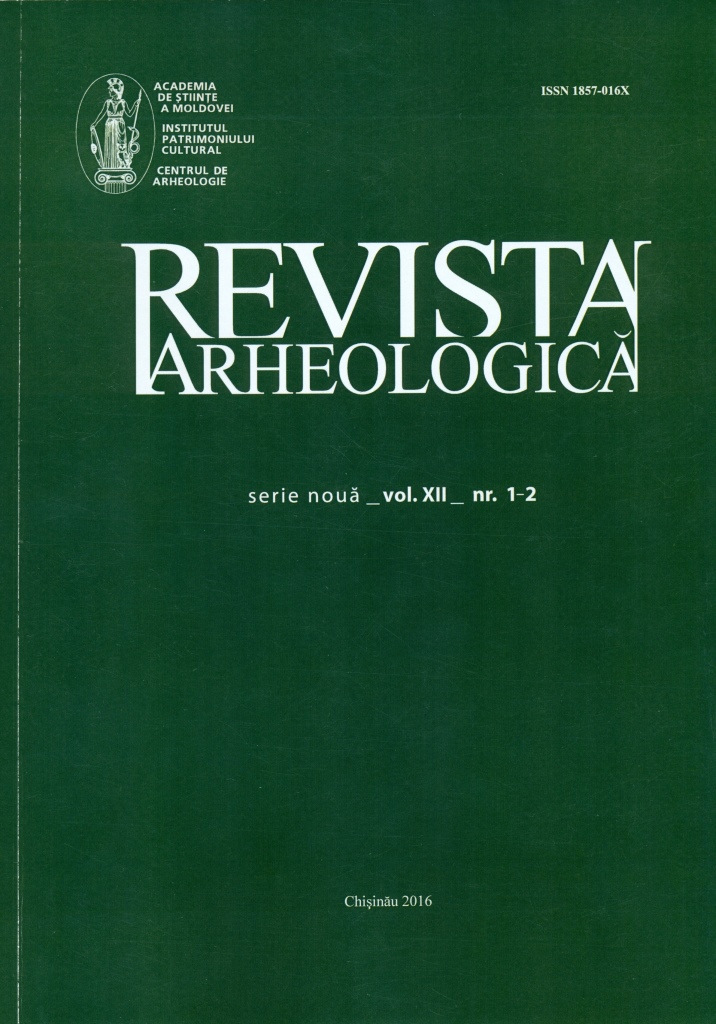Consideraţii cu privire la limita cronologică inferioară
a culturii hallstattului canelat Chișinău-Corlăteni din spaţiul est-carpatic
Study on the lower chronological limit of the Chişinău-Corlăteni grooved ware of the Hallstatt culture from the East Car- pathian regions
Author(s): Oleg LeviţkiSubject(s): History, Essay|Book Review |Scientific Life
Published by: Institutul Patrimoniului Cultural al Academiei de Științe a Moldovei
Keywords: Chișinău-Corlăteni grooved Hallstatt culture; East Carpathian region; lower chronological limit; Late Bronze Age; Noua culture; last quarter of the 13th century BC.
Summary/Abstract: The forest steppe zone of the Carpathian and Dniester regions in the Hallstatt period was inhabited by the communities of early Thracians, natives of the middle Danube basin who expanded eastwards. From an archaeological perspective, these popu- lations are known as the Chişinău-Corlăteni culture, which replaced the Noua culture of the Late Bronze Age. This process is demonstrated by a succession in multilayered settlements, where the early Hallstatt horizons overlay on stratum specific for the late Bronze Age which occurred, according to the specialists, at the middle of the 12th century BC. The results of recent research of the Noua culture prove that the final stages of the Noua and Sabatinovka cultures must be limited to the 13th century BC. Therefore, the formation of the Chişinău-Corlăteni culture in the East Carpathian area should be placed in the same chronologi- cal sequence. This situation requires for further examination of the discoveries that serve as markers of the Chişinău-Corlăteni culture, accumulated so far, in terms of determination of an area of its origin, cultural identification, and chronological frame- work of their advent in the East Carpathian region.In this regard, diagnostics are certain categories of bronzes and decor motifs on bitronconic vessels. The first ones are represented by pieces of the Central European tradition, specific for the Middle-Late Bronze Age (Hügelgräberkultur and re- spectively, Urnenfelderkultur), spread in the basins of the Middle Danube, Upper Tisa and the Carpathian basin, mostly during BrD-HaA1 (13th-12th century BC) (pieces of jewellery and clothing, weapons, tools). Among the ornamental motifs specific for bitronconic vessels characteristic of the complex Belegiš II-Chişinău-Corlăteni the conclusive decor consists of parallel horizon- tal flutes in combination with a number of circular impressions, which were not used in the ceramic ornamentation of the post Belegiš II cultural groups, the evolution of which begins in middle of the 12th century BC. In conclusion, the vestiges specific for the Chişinău-Corlăteni culture, accumulated so far, provide the basis to talk about its appearance in the Eastern Carpathian region already in the first half of the 12th century, possibly even in the last quarter of the 13th century BC.
Journal: Revista Arheologică
- Issue Year: 12/2016
- Issue No: 1-2
- Page Range: 80-105
- Page Count: 25
- Language: Romanian

